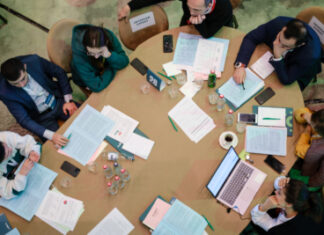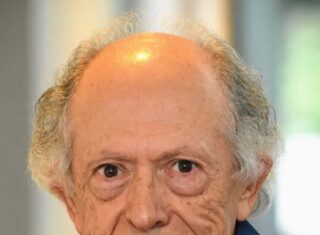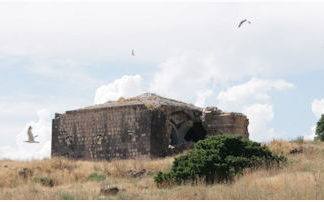By Aram Arkun
Mirror-Spectator Staff
BOSTON — The Bostonian Society hosted a special evening program, “Becoming Bostonian,” on April 7 in the Old State House to honor the life and works of Moses Gulesian, a Bostonian and Armenian preservationist. The event, cosponsored with the National Association for Armenian Studies and Research (NAASR), was part of a growing wave of attention to Gulesian’s philanthropic work, which helped both Boston and Armenians, sometimes simultaneously.
Brian LeMay, president and executive director of the nonprofit Bostonian Society, spoke about Gulesian’s work as a preservationist, as “somebody who had a deep appreciation for the fundamental ideas that lie at the foundation of this country, that are embodied in many ways in this building.” He pointed out that the discovery of the time capsule on top of the Old State House building spurred interest in Gulesian’s life and works.
LeMay provided background information about the Bostonian Society’s mission and activities, and the importance of the Old State House building itself. He said that Gulesian’s historical significance is tied to Boston and the Bostonian Society. Gulesian joined forces with prominent members of the abolitionist and suffragist movements yet until the discovery of time capsule, the Bostonian Society was not well informed about his activities.
LeMay introduced Dr. Joyce Van Dyke, playwright and Shakespeare scholar, and a lecturer at the Harvard Extension. Van Dyke managed to make Gulesian’s personality and life immediate and accessible through a very lively five-minute presentation. She found Gulesian to be a man with a “romantic soul and an iron will.” Born in the Ottoman Empire under Turkish rule, after coming to the US all alone at the age of 17, he was well placed to make Americans understand what Turkish rule really meant in those days.









